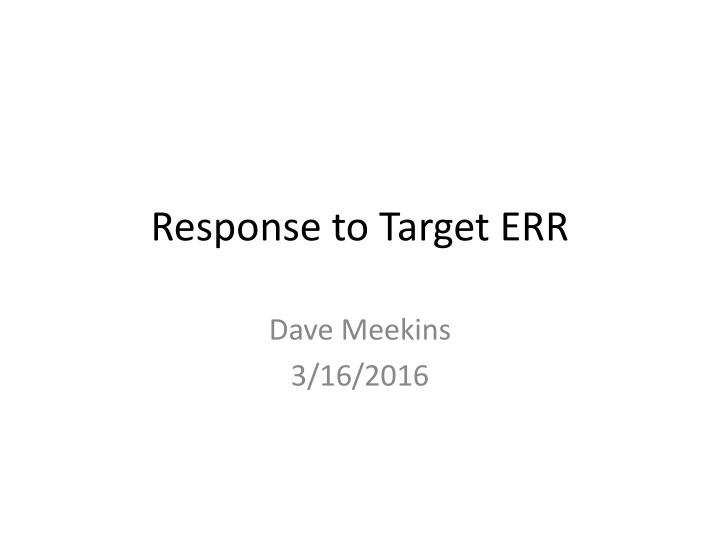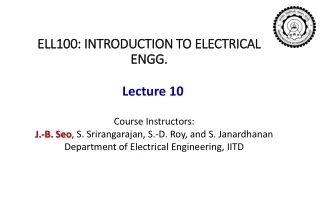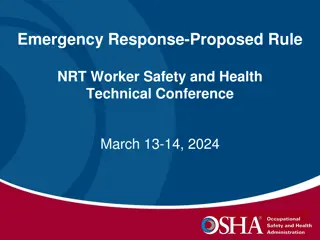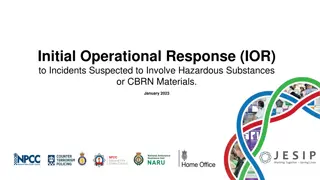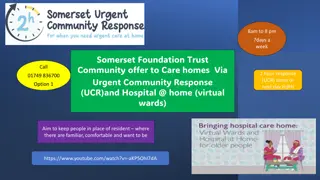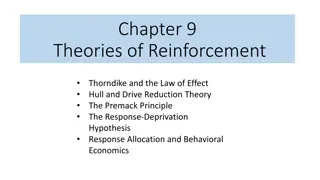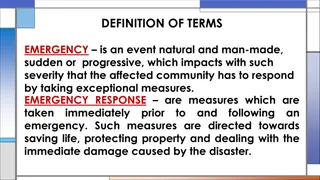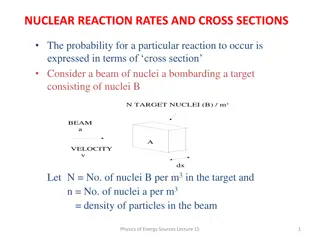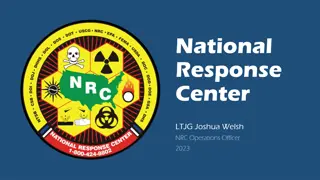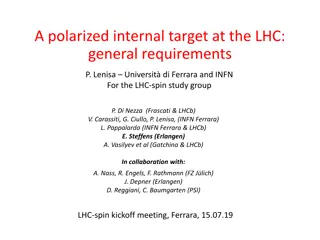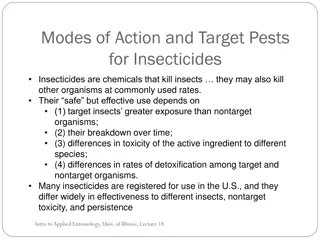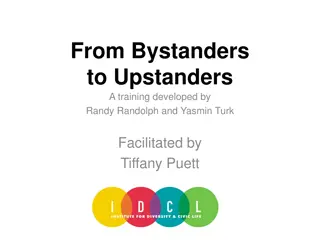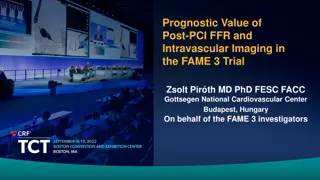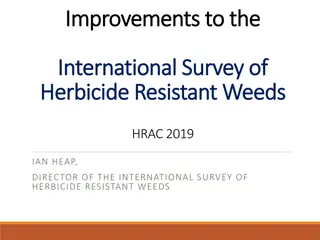Response to Target ERR
This document provides detailed responses to Target ERR and recommendations for the Tritium Target system. It includes general action items, authorities involved, procedure categories, and specific procedures for target operation, testing, and inspection. The content covers a range of topics such as certification, training, emergency planning, and public awareness to ensure a systematic approach towards maintaining operational efficiency and safety standards.
Download Presentation

Please find below an Image/Link to download the presentation.
The content on the website is provided AS IS for your information and personal use only. It may not be sold, licensed, or shared on other websites without obtaining consent from the author.If you encounter any issues during the download, it is possible that the publisher has removed the file from their server.
You are allowed to download the files provided on this website for personal or commercial use, subject to the condition that they are used lawfully. All files are the property of their respective owners.
The content on the website is provided AS IS for your information and personal use only. It may not be sold, licensed, or shared on other websites without obtaining consent from the author.
E N D
Presentation Transcript
Response to Target ERR Dave Meekins 3/16/2016
Response to Target ERR Recommendations/Comments ERR for Tritium Target 15 September 2015 Report was issued General statements Specific comments Specific recommendations Summarized as Action Items Addressed in detail in Tritium Target System Report
General Action Items 1. Definition of Authorities 2. Definition of Procedures 3. Certification of calculations/designs 4. Hot checkout tests/simulations of equipment 5. Training/education 6. Emergency Planning 7. Public Awareness
Authorities Name Group Field Dave Meekins TGT Tritium Target DA Carrol Jones FMM HVAC/Smoke removal Ed Douberly FMFC FPE/Smoke removal Tom Renzo FMF Stack (PESE) T. Michaelides EESSAF Machine FSD Robin Wines PHALLA Reviewing DA/Hall A Eng Tim Whitlatch PHALLD Reviewing DA Keith Welch RadCon Radiological Control Greg Howard SRTE Certification of Exhaust Paul Blanton* SRNL/SRTE BTSP/Shipping Ed Folts PHY DSO Chris Keith TGT Target Processes Jessie Butler PHALLA Hall A Work Coordinator (HAWC) Jenord Alston ENG Examiner/Inspector Mike Martin QA/CI CWI John Warren JLAB PA Public Affairs
Procedure Categories Assembly, Testing, Examination and Inspection Procedures QC procedures for component acceptance Welding examination Leak/pressure testing Hall access procedures Controlled, Truck Ramp Use, Restricted, etc. Interlock Certification/checklist FSD Certification/checklist Exhaust System Hut flow/leak certification Interlock testing/certification Fire protection/high flow certification Beam Operations Procedures Target Centering Beam Commissioning
Procedures OSP for target General target operation Specific critical tasks Installation and removal of cell Reference many task specific procedures OSP/TOSP/AHA Standard signoff with appropriate SMEs Shall reference task specific procedures as applicable Task specific procedures Reviewed/E-signed by authorities Electronically stored in JLAB Document Repository (same as official drawings) General target operation Checkout procedures Used in JLAB Hot Checkout tool Multiple groups complete checklists and submit in HALOG/Target Log Final readiness approval by Hall A Lead. RadCon Procedures RWPs and calibration procedures Bioassay procedure(s) Stored in RadCon document system Hall A access RWP
Task Specific Procedure List Subject/Task Approval Number TGT DA TGT-PROC-15-001 Tritium target cell component cleaning TGT DA TGT-PROC-15-002 Tritium target assembly and mechanical examination TGT DA TGT-PROC-15-003 Tritium target cell leak testing procedure TGT,RadCon,FMSR TGT-PROC-15-004 Tritium cell/BTSP receipt inspection TGT,DSO,ACCEL TGT-PROC-15-005 Tritium target FSD testing and checkout TGT-PROC-15-006 Tritium target handling hut installation and removal TGT,DSO TGT-PROC-15-007 Tritium target cell installation and removal TGT,DSO TGT-PROC-15-008 Tritium target exhaust testing/certification TGT,DSO,RadCon,IH,FML,FPE TGT-PROC-15-009 Tritium target truck ramp access TGT,DSO,HAWC TGT-PROC-15-010 Tritium target general target operating procedure TGT, DA TGT-PROC-15-011 General crane/material handling operations in tritium zone TGT,RadCon,HAWC,DSO TGT-PROC-15-012 General maintenance work in tritium zone TGT,RadCon,HAWC,DSO TGT-PROC-15-013 Tritium target collimator/seive slit installation/removal TGT,RadCon,HAWC,DSO TGT-PROC-15-014 Tritium target Hall A prerun checklist TGT,RadCon,HAWC,DSO
RadCon Procedures Addressed by Keith Welch
General Procedures Description Approval General tritium target OSP DSO,SMEs Tritium Zone Material handling TOSP(s) DSO,SMEs,RadCon FSD Checklist (Hot Checkout) TGT,FSD,DSO Interlock Checklist (Hot Checkout) WPS-015 TGT,FSD,FML,DSO JLAB CWI NDT-100 QA/CI ATS-RT procedure DA, JLAB CWI
Certification of Calculations/Design Calculations Physics Radiological Pressure system Exhaust system Mechanical Exhaust system Structural Design Vacuum Exhaust Pressure system
Physics Calculations Document Number TGT-CALC-103-003 TGT-CALC-103-005 TGT-CALC-103-006 TGT-CALC-103-009 TGT-CALC-103-010 TGT-CALC-103-016 Description Reviewed by Electron beam energy loss in cell Electron beam energy loss in Be isolation window Multiple scattering of beam in Be isolation window Thermal analysis of Be window in beam Tritium cell pressure and permeation rate CFD simulation of T2 gas in beam CDK CDK CDK CDK CDK N/A
Pressure System Calculations Document Number TGT-CALC-103-002 Description Reviewed by Pressure calculations for cell Elastic plastic analysis of cell assembly with shipping covers Thermal analysis of cell entrance window in beam Thermal stress analysis of the entrance window Thermal analysis of main body Thermal stress analysis of main body Thermal analysis of exit window with no raster Thermal/mech model of exit with no rasterN/A Thermal analysis of cell in ambient temperature TW/RW TGT-CALC-103-007 TW/RW TGT-CALC-103-008 TW/RW TGT-CALC-103-012 N/A TW/RW N/A TGT-CALC-103-013 TGT-CALC-103-014 TGT-CALC-103-015 N/A TGT-CALC-103-017 TGT-CALC-103-018 SRTE/SRNL
Exhaust/RadCon Calculations Document Number TGT-CALC-103-001 TGT-CALC-103-004 TGT-CALC-103-006 TGT-CALC-103-009 TGT-CALC-103-010 TGT-CALC-103-011 Description Reviewed by Tritium exhaust ventilation Release of tritium into hall and worker exposure Multiple scattering of beam in Be isolation window Thermal analysis of Be window in beam Tritium cell pressure and permeation rate Hot Spot simulations of tritium target release CJ, KW TBD KW TBD CDK CDK CDK/BS et al. Tech Rep. KW TBD Design Document Number TGT-103-1001-0000 A11112-14-01-0800 TGT-103-1000-0013 Description Reviewed by System P&ID Stack top level Cell Assembly Exhaust system certification Vacuum system certification DGM, CDK, CJ, KW, ED, KW, DGM, CJ, ED, KW, TR DGM, RW, CDK Test Test
Hot Checkout Using Hot Checkout Tool Similar to Hall D Tritium specific subsystems, components, and Check lists only Includes all sub systems affected by tritium Performed prior to run start and after long down Completed checklists shall be filed in HALOG/TARGETLOG with two signatures Multiple levels of sign off at component, subsystem, and system levels. Final Ready State set by Hall A lead
Hot Checkout/Equipment Certification Exhaust system Certified by testing/measurement (SRTE SME) Teach JLAB to repeat certification Fine tuning will also be set Calibrated equipment purchased Vacuum system Standard leak test (HALOG/TARGETLOG logged) Interlocks Issue fault condition for all interlocks and verify FSD Issue fault condition for all FSD and verify Verify CANS access
HEAT SINK TS-6A HI COOLANT TS-5A HI FSD HEAT SINK TS-6B HI COOLANT TS-5B HI HEAT SINK TS-6A HI BEAM RASTER POWER SUPPLY FAULT FLOW SWITCH FS-1 Be WINDOW LOW BEAM RASTER COMPARATOR FAULT PS-2 COLD CATH HI PAH-1 VAC CHAMB HI T2 AREA SENSOR HI ION CHAMBER FAULT FAL-1 PUMP EX FLOW LOW TARGET MOTION FSD SCHEMATIC 16
Exhaust System Activation ALARM BEACON ACTIVATE EXHAUST MANUAL ACTIVATION MANUAL COUNTING HOUSE REMOTE T2 DETECTOR HANDHELD T2 MONITOR ACCESS CHAMBER VACUUM SWITCH LOWER RAMP OPEN POWER FAILURE T2 RELEASE 1+2 FAIL 17
Vacuum Fault System FSD issued on all faults Getter operates on cold cathode failure Pressure switch closes main turbo valves Flow switch on water cooling for Be window All faults trip alarms on UI Pressure events trip heater power. FSD Activate Exhaust CLOSE MAIN TURBO ISOLATION VALVES ACTIVATE GETTER PI-2 TRIP CC GAUGE VAC HIGH PAH-1 TRIP VAC VERY HIGH FS-1 TRIPS Be COOLER VACUUM SYSTEM FAULT LOGIC 18
Training Requirements Standard Hall A training Tritium I: General Hall A Access Web based RadCon training to be developed by M. Keller Special walkthrough of Hall A (Hall A personnel) Work in Hall A but outside Tritium Zone All Hall A shift workers/ARMS Tritium II: Required for Tritium Zone work Classroom RadCon training for work inside Tritium Zone (while target is installed) to be developed by M. Keller Tritium target operator training: Analogous to Hall A cryotarget training. BTSP: Training required for sealing and shipping BTSP Only required by SRS personnel performing these functions. JLAB personnel shall not perform these functions SRS personnel not required to take Tritium I and II. Other training as required by JLAB ES&H Manual
Emergency Planning Emergency Response Local fire/EMS etc. (K. Welch) Weather - Hurricane prep Warm up target Deenergize all power supplies Relieve vacuum Remove cell and store in BTSP/locked storage container
Local Emergency Response Emergency response governed by Emergency Responder s Guidebook. RadCon TBD to address minor edits Only minor changes are expected K. Welch is responsible for issue
Public Affairs NEPA: Supplemental analysis required File with DOE Headquarters DOE Function Public Awareness JLAB Management JLAB PA
Staffing levels Normal staffing levels are expected for standard operations Limited staff and controlled access for special conditions Target cell installation/removal Material handling inside Tritium Zone Unforeseen issues (all governed by TOSP/OSP) Staffing limited to personnel required to perform the work safely (RadCon, Hall A Tech Staff, Target Group). Staffing will be determined by TOSP/OSP and RWP Access to Hall under special conditions shall be determined by Hall A work coordinator.
Tritium Target Final Ladder Target Total Solid Thickness Fluid Thickness 0.16 g/cm2 0.075 g/cm2 Tritium Cell 0.16 g/cm2 0.075 g/cm2 Helium 3 Cell 0.16 g/cm2 0.12 g/cm2 Deuterium Cell 0.16 g/cm2 Empty Cell N/A 0.16 g/cm2 0.05 g/cm2 Hydrogen Cell 0.3 g/cm2 Aluminum Dummy N/A 0.2 g/cm2 Carbon Optics N/A 0.167 g/cm2 Carbon Foil N/A 0.167 g/cm2 Carbon Hole N/A 1.37g/cm2 Thick Aluminum N/A 0.16 g/cm2 BeO N/A 0.04 g/cm2 Be Isolation window N/A
Access Controls CANS on ALL access points Tritium I is required for all personnel doors to be opened. All doors shall be posted with tritium signage. Truck ramp doors controlled by CANS Limited to Hall A Technical Staff and Target Group Lead Tritium II is required to activate as well as being on limited list No limits on staffing in Hall A are foreseen with exception of work near target/pivot and during critical operations Controlled access protocols shall be in use during installation, removal, and other critical material handling operations on or near the target when it is in place. Access shall be limited to essential personnel Work shall be governed by OSP/TOSP and RWP as applicable
Crane Use/Material Handling Two cases: Lifts outside of Tritium Zone Lifts inside Tritium Zone Normal ESH requirements shall be met Lifts/handling inside Zone: TOSP required Tritium II Training required Lift plan required RWP/RadCon approval of TOSP required Lifts/handling outside zone: No special requirements Normal ES&H requirements Truck ramp access has special procedure
Admin Items Task 1 Complete Hall A and Hut are considered Confinement , not Containment/confinement per DOE Handbook on Tritium Handling and Safe Storage. Documentation has been changed to be consistent with this definition. Task 2 Working Safety controls must be considered in the Facility Safety Assessment Document (FSAD). The tritium target is considered an USI. This is addressed in the FSAD update. R. May is responsible for completing this task. Task 3 Complete Explore using OTR from the Be window as a beam diagnostic. The possibility of using the Be window for an OTR has been investigated. The principle has advantages however due to close proximity of the window to the target face, the Be window is not visible from downstream. Unfortunately this window will also be difficult to see from the upstream side as well due to the narrow collimator installed. Therefore, using OTR on the Be window as a beam diagnostic has been determined to be not practical.
Task 4 Working Develop/Implement public information campaign for employees and public (Lab Leadership) on science case and engineered safety controls. Have contextual information ready in case of incident. Publish article discussing tritium target issues. This process has been started. Upper Management, RadCon, and JLAB Public Affairs are responsible for completing this task. Task 5 Working Educate NNFD on the hazards of Tritium so as to assist them in preparing to respond to an emergency event (Emergency Manager). Meeting is planned with NNFD. Minimal to no additional requirements for emergency response are anticipated. K. Welch is lead for addressing this issue. Task 6 Complete Institute CANS for access control, evaluate for the Green Door. A CANS access point has been installed on this door. Additionally, another CANS access point is scheduled for installation at the top of the Hall A truck ramp to activate the rollup door. This access point shall only be available from the inside of the ramp. FML is completing the final installation in Spring 2016.
Equipment Items Task 1 Working We agree with freezing the design of the target and not allowing changes without an AD-level review/approval. Target design has been modified slightly. This was necessary for the cell assembly to fit into the BTSP. The alteration of the design affected the end shipping cover and the valve subassembly and did not affect the cell entrance window or main body. Physics AD approval of this change is pending the review of the design by R. Wines and T. Whitlatch. Task 2 Complete We support the goal that the final target ladder configuration be finalized by March 1, 2016. The target ladder including gas targets, solid targets, and optics/dummy targets has been finalized. Task 3 Complete No changes to the target ladder shall be allowed during the running of the four experiments. Agreed. No changes are planned or required for the ladder during the experiment.
Task 4 Working All pressure system analyses provided during the review need to be reviewed and approved prior to February 1, 2016. Review of the pressure system analysis is currently underway. Alterations of the design required by shipping/packaging constraints resulted in a short delay in this process. Anticipated completion date for this review to be completed is 15 April 2016. R. Wines and T. Whitlatch are performing review. Review shall be documented using JLAB Document Repository.
Task 5 Working It is important that detailed schematics of vacuum systems and exhaust systems presented today be checked or certified for functionality of what they are intended for. The as-built systems need to be simulated/tested before tritium target cell arrival from SRTE. The details of the vacuum and exhaust schematics are formally given on the system P&ID JLAB drawing TGT-103-1001-0000. This drawing is filed in the JLAB Document Repository. The following approvals (indicated by e-sign) shall be required: C. Jones FML JLAB Fire Protection Engineer (Ed Douberly) Target Group Lead C. Keith JLAB DA D. Meekins (Author) JLAB RadCon K. Welch Hall Engineering R. Wines Industrial Hygiene J. Williams Physics Division DSO E. Folts The vacuum system shall be certified by formal leak testing performed by a qualified JLAB vacuum leak test technician (P. Hood). The results of the leak test shall be documented and filed in the appropriate pressure system folder. The exhaust system shall be certified for two cases: Case 1: Low flow for Hut Case 2: High flow In both cases a report giving results of certifications shall be forwarded to FML, JLAB FPE, and RadCon. These reports shall be filed in the appropriate pressure system folder. SRTE Engineer will perform and teach JLAB DA to certify
Task 6 Complete Each component shall be scribed with a unique JLAB serial number. Each cell assembly shall be examined using procedure TGT-PROC-15-002. Using the cell filling procedure (TGT-PROC-15-003), the cell fluid is recorded and permanently documented. This provides full traceability for the target cell and fill fluid. Note tritium cell assemblies shall be labeled JLAB-T2-01 , -02 etc. (Also required by SRTE) Task 7 Complete Consider the collateral damage if the adjacent cell has a catastrophic failure. Note that the mechanical and chemical stored energy contained in each of the cells is extremely low. The only credible source of external heat affecting a single cell (e.g. not fire) is that of beam heating. Numerous safeguards exist that mitigate the risk of excessive beam heating The cell will fail in a ductile mode any debris from a failure would be directed out away from other cells in the stack which would remain unaffected. Experimental Run shall be stopped if cell failure is observed. Task 8 Complete Consider physical keys on the target cells/ladder to ensure that each target cell can only be mounted at one location. Each target cell is uniquely labeled with full documented traceability. The use of unique keys would require at least one full set of spares. It is the opinion of the DA that such a standardization is the better choice in this case. Consider adding unique identifiers (aka color/names) to the target gas cells.
Task 9 Complete Determine the maximum thickness and location for an exit window that does not negatively impact the physics program. It is clear that a Be window located about 50cm downstream from the target would negatively impact the physics from a data collection standpoint. This would however increase the dose for anyone working at or near the target/pivot. The relatively low tritium exposure to the exit pipe is unlikely to affect future work on this component due to current contamination. The cost of replacing this component is also not prohibitive. Tin summary, a 0.015 inch thick window would not negatively impact the physics but, would likely result in higher doses to personnel working near the pivot. Note that collimator and sieve slit changes are planned. Task 10 Working Stress corrosion testing of pre-cracked Aluminum samples should be evaluated after 4, 8 and 12 months as planned and information should be utilized to determine the range of safe life-cycles of target cells. Testing is currently underway. Results are not yet available. These results shall be formalized and reported to Physics DSO.
ES&H Items Task 1 Complete Re-do/check certain aspects of atmospheric dispersion at site boundary, evaluate building wake turbulence (Rad/Con). Keith Welch completed a separate calculation summarized in the TBD: Title: Technical Basis for Stack Height to Meet Design Goals for Public Doses in the Event of a Release from a Proposed Tritium Target Author: K. Welch Reviewer: R. May Date approved: 2/24/16 Approved by: V. Vylet Recheck has confirmed original results. Task 2 Complete Savannah River will provide advice on bioassay, emergency response. SRTE (T. Edwards) has been in communication with JLAB RadCon on this issue. M. Keller is lead on this issue. Task 3 Working Define radiological controls, including bioassay requirements. JLAB RadCon is working with SRTE (T. Edwards) to develop program. Note that this program will be more accurately described as a bioassay screening program. M. Keller is lead for completing this task. Task 4 Complete The control of Hall access during "restricted" access needs to address the issue with the door between the accelerator and the Hall. This has been addressed by adding a CANS access point to this door.
Shipping Items Task 1 Complete The transportation requirements for shipping the container must be fully understood and implemented with respect to flammable gas and radioactive material requirements. The tritium cell will contain a type A quantity of tritium inside a user specified container. The Bulk Tritium Shipping Package has been approved for use at SRS. The BTSP is certified to ship type B quantities contained in a user specified package. The BTSP is fully acceptable for use as the shipping container for the tritium cell. The BTSP exceeds the requirements for shipping hazardous material, type A quantities of Radioactive materials, and this quantity of flammable gas. Task 2 Issues Arrange for just-in-time delivery of the cell to minimize the potential for outgassing within the shipping container. The complexity of scheduling, filling, leak testing, packaging and shipping at SRTE will not allow for just-in-time delivery of the tritium cell. Therefore two options exist. 1) JLAB intentionally delays filling/shipping until the run is expected to start. 2) The tritium cell is shipped near the run start date and will be received in the Hall. The cell will remain in the Hall inside the BTSP until it is installed.
Task 3 Working Perform a dry-run with helium to validate design of packaging methodology. Consider dry-running forklift and installation operations as well. Each target cell shall undergo substantial leak testing which is summarized below: Leak test with He in reverse mode 500 psi internal pressure no covers installed. Leak test with He in reverse mode 1000 psi internal pressure with covers installed. Leak test on valve stem He in normal mode at 500 psi internal pressure No covers installed. Valve torqued to required setting Measures valve leak through Each leak test is documented and filed with pressure system documentation. Leak test is done on each cell. Traceable with serial numbers Note that there is no need to certify the BTSP which has undergone extensive testing and analysis. The MTV shall be secured inside the BTSP. Cell assembly mounted in MTV shall undergo drop testing at approved testing lab (Applied Testing Services). No fork lift dry run is planned.
Task 4 Working Receiving should be done directly by the RadCon department. Inspection requirements will be defined with respect to acceptable limit of tritium contamination/outgassing. Receiving shall be performed by JLAB RadCon in collaboration with JLAB Target Group DA. The following procedure for receipt of the BTSP/cell is under development: TGT-PROC-16-004. JLAB RadCon and DA are working with SRNL to develop the procedure and determine acceptable limits for observed tritium outgassing. Task 5 Working Keep shipping container staged nearby for potential storage needs. Evaluate need for alternate storage location. Agreed. The BTSP, when not containing the tritium cell, shall be stored in the Target Group Rad Area (note this is not a radiation area). The BTSP shall be used to store the cell when it is removed from the scattering chamber. The use of a locked and sealed storage box for the BTSP (containing the tritium cell) is being investigated. The storage location shall be in Hall A.
Procedural Items Task 1 Working The anticipated release dose relies on proper functioning of systems and correctly following of applicable procedures established for each release scenario. In the worst case scenario when no procedure is followed and all safety systems failed, a modest dose rate of 1.5 rem is anticipated. It is important that operational procedures are well established and followed by all personnel. Agreed. All personnel entering Hall A while the tritium target is located therein, shall receive training (Tritium I). Escorting personnel without this training shall not be allowed. This does not apply to SRS personnel involved in packaging/shipping the BTSP. Standardized procedures for general access and work in Hall A are under development. Detailed procedures for specific target tasks, beamline tasks and tasks near the pivot shall be numbered, rev ed, and stored in the JLAB Document Repository. These procedures shall only be performed by trained and qualified personnel. Note that Tritium II training shall be required for all personnel working near the tritium cell.
Task 2 Working The large number of administrative elements involved in maintaining the required beam size, beam current, target cell locations will require establishing detailed procedures and comprehensive training of relevant staff. Agreed. The following training shall be required for all personnel working in Hall A during the tritium run period. Tritium I: for general access and work in Hall A. Tritium II: for work near the tritium target or vacuum system while target is installed. Tritium I: General Hall A Access Web based RadCon training to be developed by M. Keller Work in Hall A but outside Tritium Zone All Hall A shift workers/ARMS Tritium II: Classroom RadCon training for work inside Tritium Zone to be developed by M. Keller Tritium target operator training: Analogous to Hall A cryotarget training. BTSP: Training required for sealing and shipping BTSP Only required by SRS personnel performing these functions. JLAB personnel shall not perform these functions SRS personnel not required to take Tritium I and II. Standard Hall A training Other training as required by JLAB ES&H Manual
Task 3 Working Define restrictions/requirements during installation, changeover of equipment and post installation Staffing levels Access controls/CANS Training requirements Crane usage Local emergency response Et Cetera and present at the equipment-related readiness review. All issues addressed earlier in talk
Task 4 Working Develop Hot Checkout Tool for Tritium Target with 2 layers of hands-on verification. A Hot Checkout list using a model similar to the Hall D Hot Checkout is under development. This system requires the following: Component level checklists performed by individuals Checklists shall be logged in HALOG/TargetLog Two signatures shall be required for checklist to be accepted. Subsystem level signoff by approved individuals System level signoff by approved individuals Final readiness signoff (by Hall leader or Physics DSO) Tool is under development by Hall A staff, et al.
